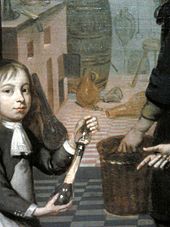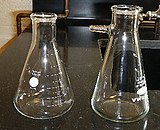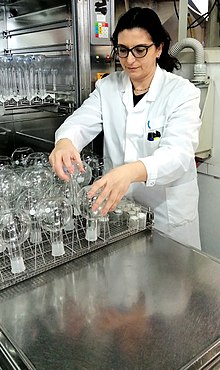- An all-glass check valve.
- An Erlenmeyer and a filtering flask. Note the barbed sidearm on the filtering flask.
- A glass adapter with a hose barb on the left and a ground glass connector on the right.
- A taper joint stopper with PTFE sealing ring. Note the optical transparency of the narrow sealing ring pressured by glass joint on the right.
- A thread T-bore plug valve used as a side arm on a Schlenk flask.
- A common straight bore glass stopcock attached with a plastic plug retainer in the side arm of a Schlenk flask.

Laboratory glassware is a variety of equipment used in scientific work, traditionally made of glass. Glass may be blown, bent, cut, molded, or formed into many sizes and shapes. It is commonly used in chemistry, biology, and analytical laboratories. Many laboratories have training programs to demonstrate how glassware is used and to alert first–time users to the safety hazards involved with using glassware.







